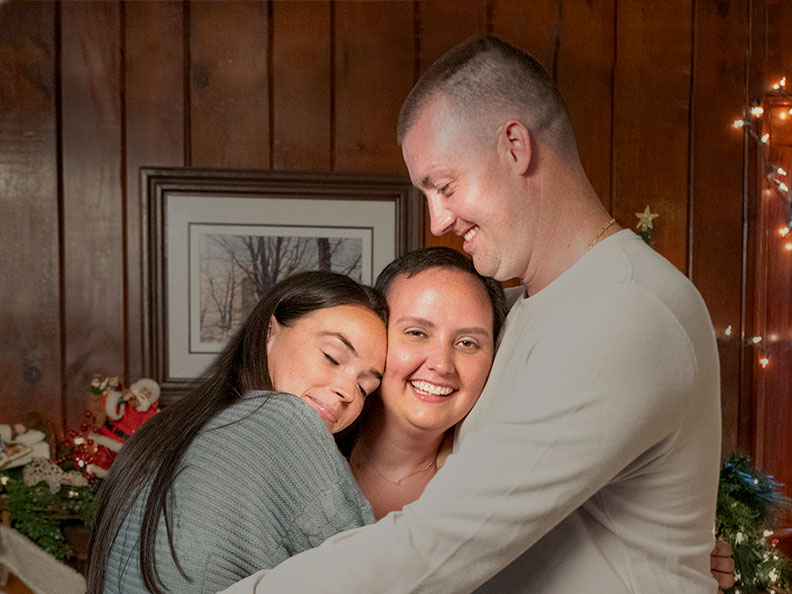Your gift is 100% tax deductible
Risk Factors for Acute Lymphocytic Leukemia (ALL)
There are only a handful of known risk factors for acute lymphocytic leukemia (ALL), also known as acute lymphoblastic leukemia.
A risk factor is something that increases your chance of getting a disease such as cancer. Some risk factors, like smoking, can be controlled. Others, like your age or family history, can’t be changed.
But having a risk factor, or even several risk factors, doesn’t mean you will get the disease. And many people who get the disease may have few or no known risk factors.
Here is what we know about risk factors for ALL.
Radiation exposure
High levels of exposure: Exposure to high levels of radiation is a risk factor for both ALL and acute myeloid leukemia (AML). For example, Japanese atomic bomb survivors had a greatly increased risk of developing acute leukemia.
Radiation therapy: Treating cancer with radiation therapy also increases the risk of ALL. The risk seems to be higher if chemotherapy and radiation are both used in treatment.
Medical imaging tests: Being exposed to lower levels of radiation from medical imaging tests like x-rays and CT scans may also be a risk factor for ALL (and other leukemias). But the possible risks are not well understood.
- Exposure to this level of radiation, especially very early in life, may carry an increased risk of leukemia, but this is not clear.
- If there is an increased risk, it is likely to be small.
- But to be safe, most doctors try to limit radiation exposure from these tests as much as possible, especially in children and pregnant women.
Certain chemical exposures
Exposure to certain chemotherapy drugs and other chemicals, including benzene, may increase the risk of ALL. Benzene is used in many industries to make other products. It is also in cigarette smoke, gasoline and motor vehicle exhaust, and some glues, cleaning products, detergents, art supplies, and paint strippers.
Chemical exposure is more strongly linked to an increased risk of AML than to ALL.
Certain viral infections
Infection with the human T-cell lymphoma/leukemia virus-1 (HTLV-1) can cause a rare type of T-cell ALL. Most cases occur in Japan and the Caribbean area. This disease is not common in the United States.
In Africa, the Epstein-Barr virus (EBV) has been linked to Burkitt lymphoma, as well as to a form of ALL. In the United States, EBV most often causes infectious mononucleosis (“mono”). It has also been linked to a type of lymphoma that can happen after a stem cell transplant. This is known as post-transplant lymphoproliferative disorder, or PTLD.
Certain genetic syndromes
ALL itself doesn't seem to run in families, so a person’s risk is not increased if a family member has the disease (other than an identical twin — see below).
But there are some genetic syndromes (some of which can be inherited from a parent) that seem to raise the risk of ALL.
These include:
- Down syndrome
- Fanconi anemia
- Bloom syndrome
- Ataxia-telangiectasia
- Li-Fraumeni syndrome
- Shwachman-Diamond syndrome
Age
ALL is more likely to happen in young children and in adults over the age of 50.
Race/ethnicity
ALL is more common in White people than in Black people. The reasons for this aren’t clear.
Being male
ALL is more common in males than in females. The reason for this isn’t clear.
Having an identical twin with ALL
Someone with an identical twin who develops ALL in the first year of life has an increased risk of getting ALL.
Uncertain, unproven, or controversial risk factors
Other factors that have been studied for a possible link to ALL include:
- Exposure to electromagnetic fields (such as living near power lines or using cell phones)
- Workplace exposure to pesticides and certain other chemicals
- Smoking
- Exposure to hair dyes
So far, none of these factors have been linked conclusively to ALL, but research in these areas continues.
- Written by
- References

Developed by the American Cancer Society medical and editorial content team with medical review and contribution by the American Society of Clinical Oncology (ASCO).
Appelbaum FR. Chapter 95: Acute Leukemias in Adults. In: Niederhuber JE, Armitage JO, Doroshow JH, Kastan MB, Tepper JE, eds. Abeloff’s Clinical Oncology. 6th ed. Philadelphia, Pa. Elsevier: 2020.
National Cancer Institute. Acute Lymphoblastic Leukemia Treatment (PDQ®)–Patient Version. 2025. Accessed at https://www.cancer.gov/types/leukemia/patient/adult-all-treatment-pdq on May 5, 2025.
National Cancer Institute. SEER Cancer Stat Facts: Acute Lymphocytic Leukemia (ALL). Accessed at https://seer.cancer.gov/statfacts/html/alyl.html on May 6, 2025.
Last Revised: August 13, 2025
American Cancer Society medical information is copyrighted material. For reprint requests, please see our Content Usage Policy.
American Cancer Society Emails
Sign up to stay up-to-date with news, valuable information, and ways to get involved with the American Cancer Society.



